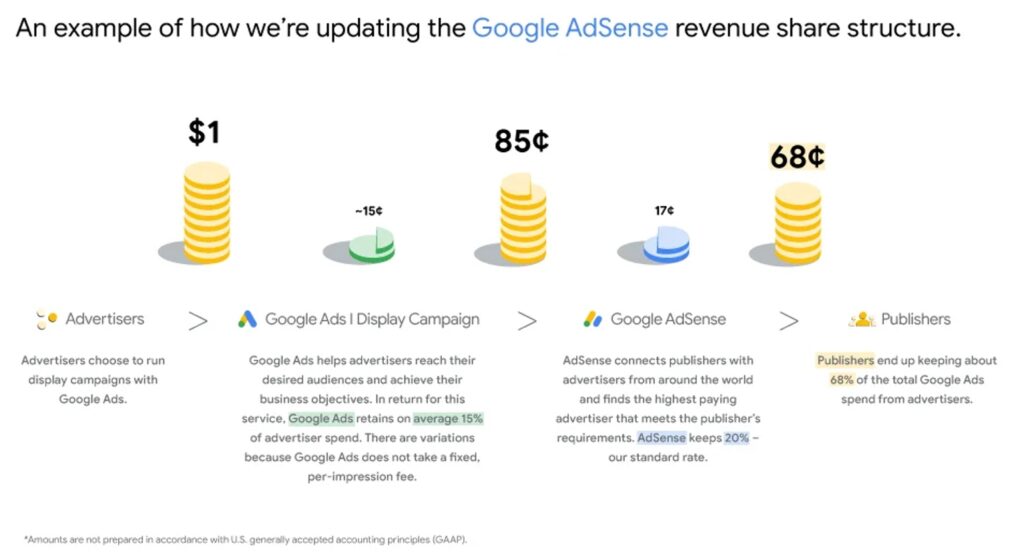Google AdSense, a longstanding ally for publishers seeking to monetize their websites, is evolving to adapt to the ever-changing landscape of online advertising.
In a recent announcement, Google’s Vice President of Global Ads, Dan Taylor, unveiled two major updates to AdSense that are set to empower publishers with a more transparent and flexible monetization platform.
Let’s dive into the changes and explore how they will impact publishers’ revenue streams.
Update 1: AdSense Revenue Share Structure
For years, AdSense has been upfront about its service fee, traditionally keeping 68% of the revenue generated through its network. However, the game is changing. Google is taking a step forward by splitting the AdSense revenue share into separate rates for the buy-side and sell-side.
What this means for publishers is that when using AdSense for content, they will receive 80% of the revenue after the advertiser platform’s fee, whether that platform is Google’s buy-side or a third-party service.
To break it down further, when Google Ads purchases display ads through AdSense, they retain approximately 15% of the advertiser’s spend.
The variance in this percentage arises because Google Ads doesn’t charge a fixed, per-impression fee, with many advertisers choosing to pay based on user actions like clicks or conversions.
Nevertheless, publishers can expect to retain around 68% of the revenue from these transactions.

When advertisers opt to use third-party platforms to purchase display ads on AdSense, publishers will keep 80% of the revenue after the third-party platform has taken its fee.
Importantly, Google doesn’t exercise control or visibility over the fees charged by these third-party platforms, nor their calculation methods.
Update 2: Per-Impression Payments for Publishers
In a significant move towards standardization, AdSense is transitioning from primarily paying publishers per click to the display industry’s prevalent payment method—per impression.
This change aims to provide a uniform and consistent payment structure for publishers across Google’s suite of products and third-party platforms. It’s important to note that this transition will not impact the type or quantity of ads that publishers can display on their websites.
AdSense policies and Better Ads Standards, which prohibit intrusive practices like pop-ups and screen-dominating ads, will remain in place.
These changes are scheduled to take effect early next year, and publishers need not take any specific actions to implement them.
In conclusion, these AdSense updates signify a major step towards greater transparency and a more level playing field for publishers seeking to monetize their content.
By adjusting the revenue share structure and moving towards per-impression payments, Google is ensuring that publishers can compare and optimize their earnings across various technology providers and platforms.
Remember that advertising technology plays a crucial role in supporting the diverse and creative content we enjoy online.
Google remains committed to contributing to the open web and simplifying the monetization process, allowing publishers of all sizes to thrive.
With these changes, publishers can look forward to enhanced earning potential and a more equitable environment for online advertising.
1 thought on “AdSense Monetization Update: Boosting Publisher Earnings with Per-Impression Payments”